Search Results for Tag: Mount Everest
Garbage collection on Everest
When, finally, will a piggy bank be placed in the editorial offices, into which everyone has to pay five Euros, who calls Mount Everest the “highest garbage dump in the world”? The money could then be donated to environmental projects in Nepal. These days, the phrase again was often used in the German press. And hardly anyone made the effort to look at this more closely. What has happened? There is a new rule to remove garbage from Everest, no more and no less.
![]() read more
read more
Motorised glider over Everest
Science and adventure are often not far apart. With a motorised glider and a 3-D camera on board scientists of the German Aerospace Center (DLR) and pilots of the “Mountain Wave Project” have explored Mount Everest a week ago. “The conditions were ideal, despite the wind speeds at the summit of Everest, which neared 100 kilometres per hour,” said pilot Klaus Ohlmann. “The almost turbulence-free slope updrafts helped us ascend quickly.” Ohlmann and his co-pilot Jona Keimer started in Pokhara in the Annapurna region and needed one and a half hour to reach the highest mountain in the world. With the images of the special camera a precise 3-D model of the region around Mount Everest will be produced, in which, according to DLR, even small objects of only 15 centimeters size are visible. The model shall be useful for disaster protection and rescue operations. The video of the DLR awakens wanderlust. Check it out for yourself:
Less expeditions, less money
Nepal sees his mountain luck run out. “The government must frame policies to gain a competitive edge”, a report by the Ministry of Culture, Tourism and Civil Aviation said which was quoted in the “Himalayan Times”. The neighbouring countries had started aggressive campaigns to attract more climbers. India had offered a discount of 50 per cent on climbing fees, Pakistan had waived off royalties for all peaks below 6500 meters, the report said. Nepal is charging fees for mountains which are much lower, e.g. for 5500-meter-high Chhukung Ri, a popular trekking peak in the Khumbu region.
![]() read more
read more
Dujmovits returns to Mount Everest
Two weeks have passed since Ralf Dujmovits has decided to abandon his winter expedition on Nanga Parbat due to the strong risk of icefall. Two weeks to reflect on his experiences in Pakistan and also to look ahead. I call the 52-year-old German climber at home, in the town of Buehl at the foot of the Black Forest.
Ralf, what does German winter feel like, compared with winter in Pakistan, in particular on Nanga Parbat?
I stood at Frankfurt airport and then at the stations in Mannheim and Karlsruhe wearing a short-sleeved shirt, all around me people wrapped up in winter clothes. I had to get used again to the warm temperatures. We have a very warm winter in Germany, a real contrast to what we had in Pakistan. Whatever, I feel that I`m arriving also mentally and I am enjoying the warmth again.
![]() read more
read more
Was Mallory’s body discovered already in 1936?
Frank Smythe was obsessed with the highest mountain on earth . “Everest is becoming a life’s task”, he wrote in his diary. Smythe was a member of all three British expeditions to Mount Everest in the 1930s. Not only since his first ascent of 7756-meter-high Kamet in 1931 he was among the leading climbers of his time. On 1 June 1933 Frank equalled the altitude record on Everest with about 8570 meters, reaching probably the same point in the North Face as his compatriot Edward Felix Norton in 1924. “It (the summit) was only 1,000 feet above me, but an aeon of weariness separated me from it”, Smythe wrote. Climbing without bottled oxygen he began to hallucinate on his way back. Frank thought there was a companion and wanted to share his cake with him. He was also convinced to see two bulbous objects hovering above him. Smythe reported about these experiences in his book “Camp 6”. What Frank kept secret until his death in 1949 was a surprising discovery he patently made during his next expedition to Everest in 1936: Apparently if not likely Smythe spotted the body of George Mallory. The mystery of Mallory and Andrew Irvine, who started for a summit attempt in 1924 but did not return, has not been solved completely until today.
![]() read more
read more
Andy Holzer: “At 7500 meters everyone is disabled”
The blind can see, just in a different way. This is demonstrated by the Austrian Andy Holzer. The 47-year-old from Lienz in East Tyrol has been blind since birth. But that does not prevent him from rock climbing, ski touring or even mountaineering in the Himalayas. 16 August 1975 was a special day in Andy’s life: As a nine-year-old boy he was allowed for the first time to climb a rocky mountain together with his parents. After he had dragged himself for hours through the debris he turned to rock climbing and suddenly he regarded his father as climbing too slow. His mother couldn’t follow them. “I felt like someone had freed me from chains”, Andy recalled, as we recently met during the International Mountain Summit in Brixen.
Andy, the first question is probably always the same. How do you manage to climb a rock face without being able to see anything?
I don’t climb without seeing it. That would not work.
Please explain what you mean!
![]() read more
read more
Messner: “That was typically Ueli Steck”
Actually I wanted to ask Reinhold Messner these questions during the International Mountain Summit in Brixen. But a planned press conference was cancelled and the 69-year-old left the venue in no time at all, for whatever reason. But I had not to wait a long time for the South Tyrolean. He came to me – in a way. Last weekend the most famous mountaineer of the world gave a lecture in my home town of Cologne. Before the event started Messner answered my questions.
Reinhold Messner, recently you visited Pakistan, a few months after terrorists had shot eleven climbers at the Diamir basecamp on Nanga Parbat. Describe the atmosphere down there!
The mountain has not changed, but the connections are much worse than I thought. The terrorists were contract killers close to the Taliban, paid to carry out a bloodbath. Originally they had a different target. A great festival with polo games etc. was cancelled, probably because the organizers were worried that something might happen. Then the hit squad turned to Nanga Parbat. After the assault the killers took their money and disappeared. Some of them have been arrested, but nobody knows who has been the principal. On the one hand the terrorists wanted to hit the north of Pakistan, the local tourism, which collapsed by 90 percent. But they also wanted to hit the western world. Fortunately there have not been more victims. There were more than 60 people on Nanga Parbat, but most of them were at the high camps then.
![]() read more
read more
Destivelle: “Crazy what’s happening on Everest”
She looks younger than she really is (53 years) and her eyes twinkle when she is talking about climbing. 20 years ago Catherine Destivelle of France was a star of the climbing scene: Inter alia she soloed the classical north faces of Eiger, Matterhorn and Grand Jorasses, all of them in winter. She free-climbed the more than 6000-meter-high Nameless Tower in the Karakoram. (If you want to get an impression of her style of climbing, watch the amazing video below!) After the birth of her son Victor in 1997 she scaled down her climbing activities. I talked to Catherine on a hike during the International Mountain Summit (IMS) in Brixen in South Tyrol.
Catherine, are you still climbing?
Yes, less, but I’m still climbing. I like it. When I have time or holiday, I do it several times a week.
When you did your great climbs, in the 1980s and beginning of the 90s, you were a pioneer of women climbing. What has changed since then?
I think it’s a normal evolution. Women climbers of today are better than in our times, because they are training since their youth. Climbing has become a real sport. In my day it just had started to be a sport, but wasn’t really.
![]() read more
read more
Ueli’s third attempt on Annapurna
My gut feeling was right: Ueli Steck has actually returned to the Himalayas in order to climb again an 8000er – four and a half months after the unfortunate Sherpa attack against him, Simone Moro and Jonathan Griffith in Camp 2 on Mount Everest. The 36-year-old top climber from Switzerland travelled to Kathmandu yesterday. His destination: the South Wall of the 8091-metre-high Annapurna. “To walk through life in a comfortable way is still not my goal”, Ueli writes on his website. “This is why I want to try to climb Annapurna a third time. I would like to implement my dreams and visions into reality. Annapurna is one of them.” In 2007, he had narrowly escaped death on this mountain.
![]() read more
read more
Goettler: Relations with Sherpas will remain well
Many are familiar with the view of Makalu, without being aware of it. On pictures taken from the summit of Mount Everest in direction of the Southeast Ridge you see in the background the shapely fifth highest mountain on earth. Just a few kilometres linear distance are lying between the two 8000ers, but actually they are worlds apart. This spring the headlines concerning Everest were overturning: first the brawl in Camp 2, then the 60-year-anniversary of the first ascent. Because of this I lost sight of an expedition of four German and a Swiss climber to Makalu.
Siegrist left expedition
David Göttler, Michael Waerthl, Hans Mitterer, Daniel Bartsch and Stephan Siegrist wanted to climb the mountain in Alpine style via the challenging west pillar. Siegrist had to cancel the expedition because he got severe headaches and vision disorders, possibly due to a skull fracture that he had a few years earlier. The other four abandoned their original plan and ascended via the normal route. Waerthl returned because of icy fingers about 200 metres below the summit. The other three climbers reached the highest point at 8485 metres.
![]() read more
read more
Barrier-free Everest
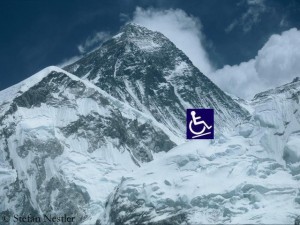 A permit for a video interview broadcasted live from the summit of Mount Everest via smartphone costs about $ 2000. We know that since this spring, when the Briton Daniel Hughes did it this way answering questions of the BBC– without permission, as it turned out later. The Nepalese Tourism Ministry was not amused. Hughes could be banned from obtaining climbing permits for ten years or banned from entering the country for five years. But I’m sure that meanwhile both parties have come to an amicable agreement on a special Everest smartphone tariff. How fortunate that I call my old friend Chomolungma from only 50 metres above sea level. Quite legally, only the NSA is listening too. It takes me three attempts to be successful:
A permit for a video interview broadcasted live from the summit of Mount Everest via smartphone costs about $ 2000. We know that since this spring, when the Briton Daniel Hughes did it this way answering questions of the BBC– without permission, as it turned out later. The Nepalese Tourism Ministry was not amused. Hughes could be banned from obtaining climbing permits for ten years or banned from entering the country for five years. But I’m sure that meanwhile both parties have come to an amicable agreement on a special Everest smartphone tariff. How fortunate that I call my old friend Chomolungma from only 50 metres above sea level. Quite legally, only the NSA is listening too. It takes me three attempts to be successful:
Namasté, Chomo! Stefan is calling! Where the hell have you been?
Also Namasté! I was taking a snow shower. Wonderful, this monsoon!
Did you really need a shower after this spring season?
Joker, are you living behind the moon?
![]() read more
read more
Bonington: The pioneers have gone elsewhere
When Everest was climbed first in 1953 Chris Bonington was a young English mountaineer of 17 years. Later he did historic climbs like the first ascents of Annapurna II in 1960, of the Central Pillar of Freney on the south side of Mont Blanc in 1961 and of the 7285-meter-high Ogre in the Karakoram together with Doug Scott in 1977 (the second ascent followed only in 2001). But Bonington also proved to be a great expedition leader. In 1970 he led the successful expedition to the South Face of Annapurna, in 1975 the expedition to Mount Everest, during which Doug Scott and Dougal Haston climbed the Southwest Face first. Bonington himself reached the summit of Everest in 1985 as a member of a Norwegian expedition. He was knighted by the Queen in 1996 for his services to the sport. I met the 78-year-old climber last week at the diamond jubilee celebration of the first ascent of Mount Everest in the Royal Geographical Society in London and asked him – of course – about his thoughts on Everest.
Sir Chris Bonington, 60 years after the first ascent of Mount Everest, how do you feel about these pioneers?
I’m a great believer in the heritage of our sport, looking back, enjoying and learning from what our predecessors have done. In a way that first ascent of the highest point on earth is one of the very, very great occasions. I think it’s story. How they succeeded and worked together, it was a superb team effort. It’s something very special.
![]() read more
read more
Friendship over generations
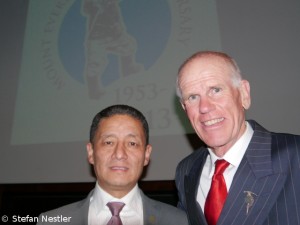
Jamling Tenzing Norgay (l.) and Peter Hillary
Like their famous fathers Tenzing Norgay and Edmund Hillary, Jamling and Peter are friends and would also be a good rope team. Both followed in the footsteps of their fathers: Jamling Tenzing Norgay (in 1996) and Peter Hillary (in 1990 and 2002) also reached the summit of Mount Everest. Both are continuing the work of their fathers for the benefit of the Sherpas and keep the memory of the two Everest pioneers alive. „My father climbed the mountain and came back down the mountain as a simple man. He lived the rest of his life very humble and simple just like Edmund Hillary”, Jamling said when we met during the Everest Diamond Jubilee Celebrations at the Royal Geographical Society in London. „No two people could have climbed Everest first than Hillary and my father.” Peter Hillary is also proud of the performance of his father and Tenzing Norgay: „For us 60 years later the key thing is what it stands for: Someone does something new. They actually open the door to everyone who follows. These things are very liberating and as a consequence very important.”
![]() read more
read more
Alexei Bolotov dies on Everest
What should have been a highlight in the history of climbing on Everest, ended in tragedy. Russian climber Alexei Bolotov fell to death in the Khumbu Icefall. Together with his compatriot Denis Urubko the 50-year-old mountaineer wanted to open a new route via the steep Southwest Face. As Denis said on phone, the rope broke on a sharp edge of rock when Alexei was abseiling. Bolotov fell down about 300 metres and died instantly. He was found at 5600 metres.
![]() read more
read more
Kammerlander: Sherpa attack ‚below the belt’
The phone rings. At the other end: „Hans Kammerlander!” I had asked the South Tyrolean extreme mountaineer by email for his thoughts on the 60-year-anniversary of the first ascent of Everest. Hans prefered to answer directly. The 56-year-old has climbed twelve of the fourteen 8000ers, all without bottled oxygen, seven of them together with Reinhold Messner. With him Kammerlander succeeded in 1984 the first (and till this day not repeated) double traverse on 8000ers, in Alpine style, i.e. without the help of Sherpas, without high camps, fixed ropes and oxygen mask. In the Karakoram in Pakistan Messner and Kammerlander summited Gasherbrum I, descended on another route to a col, from where they directly climbed up to the top of Gasherbrum II and downhill via another route. After eight days, they returned to basecamp. It was a milestone of climbing on the 8000ers.
In the morning hours of 24th May 1996 Hans reached the summit of Mount Everest, after climbing up from the Tibetan north side of the mountain. He was alone then. Afterwards he skied down, only in a few passages without snow he had to put off his skies. We talked not only about this day but also about the recent events at the highest mountain on earth.
Hans, what kind of mountain is Everest for you today?
It has always been important for me as a high altitude climber. For years I’ve dreamed of him because I have had two hobbies since I was a child: climbing and skiing. I had the idea to combine both on the highest mountain in the world.
![]() read more
read more



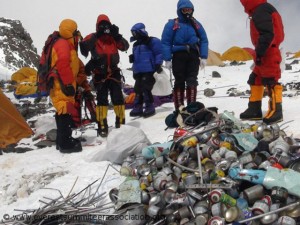

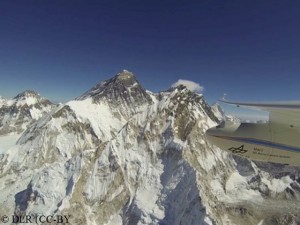
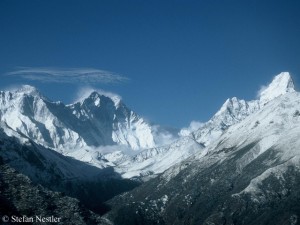
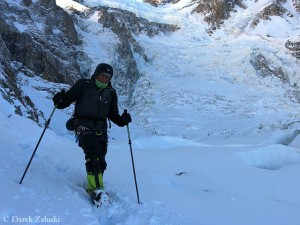
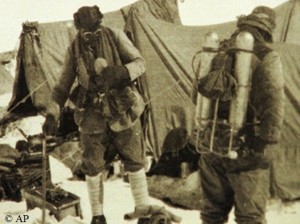
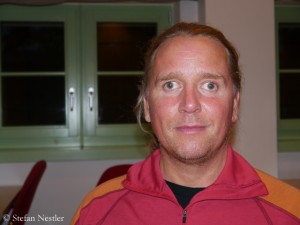
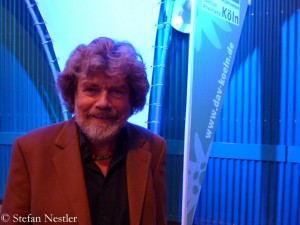
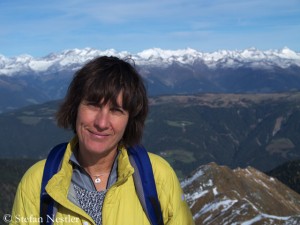
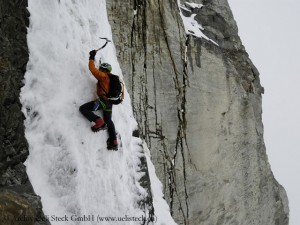
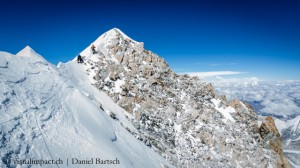
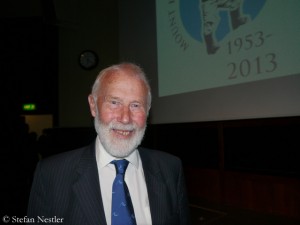
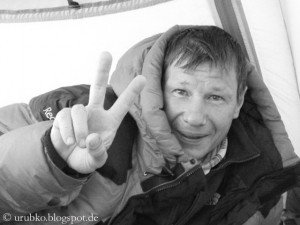
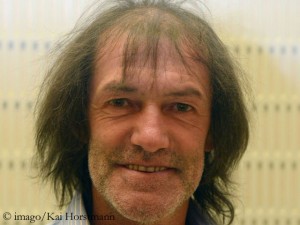





Feedback